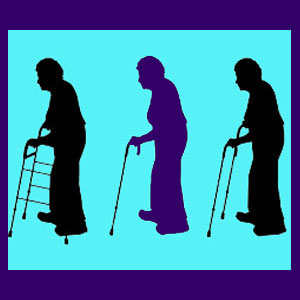
Spinal stenosis symptoms are different in every individual, due to differences in the degree of canal narrowing and the location of decreased canal size. Spinal stenosis is actually common as we age and most people do not develop any symptoms at all, despite the presence of mild or even moderate central canal changes. If symptoms do exist, they might range greatly in location , expression and severity. Symptoms might be chronic and persistent, or they might come and go occasionally, often based on position or activity. It is difficult to present a clear clinical picture of a typical case of stenosis. There are no universal expressions, but there are many similar patterns when the cause of pain involves a pinched nerve or a compressed spinal cord.
The scope of this article will focus on some of the typical expressions of stenotic change in the lumbar and cervical regions of the vertebral column.
Typical Spinal Stenosis Symptoms
Symptomatic expressions enacted by minor stenosis are indeed rare. Most older people will demonstrate the physical characteristics of spinal canal stenosis, yet will not suffer any related pain. This is because the canal remains viable and patent, despite a decease in overall or focal size.
For patients who do develop symptoms from severe canal narrowing issues, the diversity of pain and neurological effects can be devastating. These symptoms might include any of the following expressions:
Stenosis pain may be localized or radiating. Pain may occur in the arms or legs when the stenosis exists in the neck, but should be limited to the lower body when the stenotic change resides in the lumbar spine.
Numbness may be objective or subjective. True compression of the spinal neurological structures will usually produce objective numb conditions, often diagnosed as paresthesia.
Tingling may be transient or lasting, depending on the degree of compression. Tingling may be mild or can be sharp and painful. It may exist in the shoulders, arms and/or hands for cervical stenosis and may reside in the legs from any location of stenosis.
Weakness will often follow objective numbness in various areas of the body. Once again, weakness can be present in the upper or lower body from a stenotic change in the neck and is confined to the lower body when enacted by stenosis in the low back.
Cervical Stenosis and Lumbar Stenosis Symptoms
The location of the symptoms will depend on the region affected by the spinal stenosis:
Cervical spinal stenosis might cause nerve effects almost anywhere in the upper body, including the neck, upper back, shoulders, arms and hands. Pain may be present or not, regardless of whether neurological impingement exists. Some patients have terrible pain and few other problems, while others have little or no pain, but completely lose the ability to feel or use parts of their bodies. It is not generally known that cervical stenosis can also cause lower body issues, as well, including symptoms in the low back, buttocks, genitals, legs and feet. Some patients will not be able to stand or walk and some might suffer the inability to control their bowels, bladder or sexual functions.
Lumbar spinal stenosis might cause nerve effects in the buttocks, genitals, legs and feet. Lumbar stenosis is a primary cause of sciatica. Lumbar stenosis symptoms often worsen when the body is straight, such as when standing for extended periods of time. Bending and sitting might relieve the pain, since bending creates more space in the lumbar spinal canal.
Explaining Spinal Stenosis Symptoms
Stenosis can cause symptoms similar to many other back and neck pain conditions. Be sure that you have achieved an accurate diagnosis before beginning any treatment program for stenosis pain. If the pain continues despite treatment, investigate the possibility that your pain might be caused by a different reason altogether.
Remember that just because you demonstrate the structural signs of mild to moderate stenosis, does not mean that symptoms are inherent to the condition. In fact, clinical research shows little correlation between mild canal narrowing and the expression of any problematic spinal stenosis symptoms at all.





